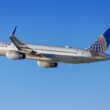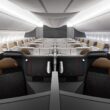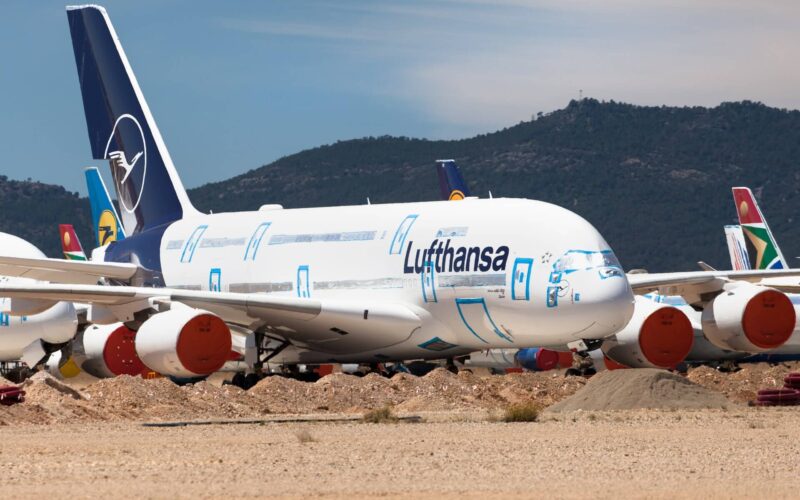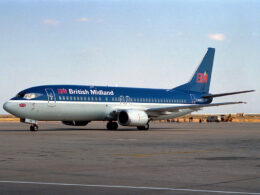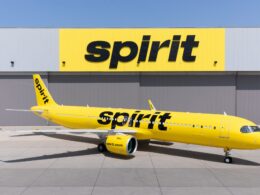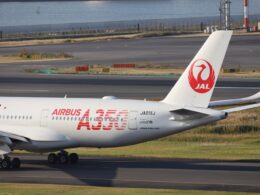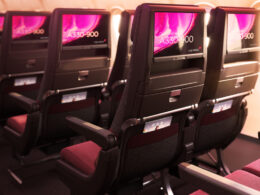It is more than likely that the days of the Airbus A380 are numbered. As international air travel remains largely in shambles, and with no short-term recovery in sight, airlines have put their A380s into long-term, or even worse, permanent storage. Even before the current crisis, however, its days were coming to an end, as no secondary market was on the horizon for ex-airline units.
Could a stretch, a re-engine or any other design changes have saved the Airbus A380?
Stretching a 72.7-meter giant
One of the first proposals that Airbus offered to airlines was a stretch of the original A380, dubbed the A380-900. Traces of the A380-900 can be found in documents from 2005, as the double-decker’s airport and maintenance planning documents mentioned that a stretch “could be developed when required by the market.”
The stretched variant could seat up to around 1,000 passengers in an all-economy configuration. Currently, the A380 has an exit limit of 868, according to its European Union Aviation Safety Agency (EASA) issued type certificate.
In 2012, Bob Lange, the manufacturer’s Senior Vice President of Marketing, was quoted as saying that 2020 would be the appropriate time to launch the stretched A380. Increasing the length of the aircraft by 6.4 meters would have allowed airlines to seat more than 100 passengers more in a typical, three-class interior configuration. At Airbus Global Investor Forum in 2014, the company’s former Chief Executive Officer Fabrice Bregier stated that Airbus would “one day launch a stretch,” as it is very obvious that a stretch has “extra potential”. The chief executive also briefly mentioned a re-engined A380, the Airbus A380neo.
“We will one day launch a 380neo,” Bregier told investors in December 2014.
Airbus A380neo
A few months prior, in June 2014, the company’s Chief Operating Officer John Leahy confirmed that Airbus was studying an A380neo.
“When your largest customer is encouraging you to study it, we will continue to study it,” stated Leahy. However, the company did not commit to building it at the time. In December of the same year, reports alleged that the manufacturer was inching ever-closer to an initial agreement deal with Rolls-Royce to upgrade the engines on the Superjumbo. The British manufacturer was already one of the engine suppliers of the A380 program with the Trent 900 family of engines.
The largest customer that Leahy was referring to was, of course, Emirates. The Dubai-based airline’s president Tim Clark remarked that Emirates would have been very keen to upgrade to the neo, eventually replacing all of the airline’s planned 140-unit Airbus A380 fleet. According to Clark, the new engines would have consumed between 12 and 15% less fuel than the current engines, further improving the economics of the A380.
At Dubai Airshow 2015, Emirates’ executive was quoted as saying that the airline “would like them [Airbus – ed. note] to get on with,” the development of the A380neo.
“We’re sending a message that this airplane has scope although others in the industry don’t share that view,” added Clark.
Airbus A380plus
However, with the announcement of the A380plus on June 18, 2017, it seemed like Airbus gave up on the A380neo. The manufacturer presented the newest model of the double-decker in the form of a development study. Its main goal was to reduce operating costs as much as 13% compared to the original design of the A380, including the fact that new winglets would have provided with 4% fuel burn savings, indicated the planemaker.
“The A380plus is an efficient way to offer even better economics and improved operational performance at the same time,” commented Airbus’ COO John Leahy. The aircraft would be a new step to “best serve worldwide fast-growing traffic and the evolving needs of the A380 customers,” he continued.
“The A380 is well-proven as the solution to increasing congestion at large airports, and in offering a unique, passenger-preferred experience.”
Improved economics of the Superjumbo was not the only thing Airbus promised. The company also presented a new product onboard, called Cabin Enablers – a multitude of options would have increased the typical four-class configuration of 497 passengers to 575 passengers. Cabin Enablers consisted of New Forward Stairs (NFS, additional 20 seats), Combined Crew-Rest Compartment (CRRC, three extra Premium Economy (PE) seats), an 11-abreast layout in Economy (23 additional Economy seats), a new Aft-Galley Stair Module (AGSM, 14 more passengers and two extra food trolleys), the option to remove the upper-deck sidewall stowage for 10 extra Business class seats, and a nine-abreast layout of Premium Economy for 11 more PE passengers.
An increased Maximum Take-Off Weight (MTOW) would have provided an additional 300 nautical miles of range. Furthermore, increased maintenance check intervals, reduced six-year check downtime, and improved systems onboard would have reduced maintenance costs and increased aircraft availability, according to Airbus release announcing the A380plus.
A turning tide
As exciting these new versions of the double-decker were, they never saw the daylight. On February 14, 2019, Emirates and Airbus delivered the devastating news that broke many hearts on that year’s Valentine’s Day – the production of the A380 would stop in 2021. The Dubai-based airline reduced its backlog by 39 units. Having only 14 aircraft on order left and without any other interest in sight, Airbus canceled the program.
Signs of trouble at the A380 production line slipped through the lines a day before Bregier told that Airbus would stretch and slap on new engines on the double-decker. Chief Financial Officer Harald Wilhelm stated that the program could be axed as soon as 2018, as sales dried up. While from 2015 to 2017 the company was set to break-even on the program, Wilhelm added that 2018 would be a loss-making year for the A380 program.
In 2018, Airbus booked a €463 million ($548 million) charge related to the A380 program.
But other turning tides could point to the fact that neither a stretch, nor new engines could have saved the Airbus A380. The perfect example could be the Boeing 747-8, which entered the market four years after the Airbus double-decker. The latest and last iteration of the Queen of The Skies was the successor of the 747-400, a model which Boeing managed to sell just shy of 700 units. The 747-8, however, has booked only 195 orders, according to Boeing Order and Deliveries data. Only 57 units were delivered to passenger airlines, showcasing just how little demand there was for a 747 with new engines.
In some ways, acquiring the 747-8 made more sense than the A380. As it was a derivative of an older model, flight crew training was cheaper, there was a commonality between the -8 and the 747-400, reducing daily operating costs. Furthermore, improved operating costs achieved via new engines and aerodynamic improvements, more cargo, and passengers onboard resulting in extra revenue, including reduced maintenance intervals – the overall economic package of the Boeing 747 was improved. Yet very few bit the bullet to buy the newest iteration of Boeing’s original double-decker. As the manufacturer reported its Q2 2020 results, the company also announced that the production line of the 747 would push out its final unit in 2022, ending a 54-year run.
It could be pointed out that quad-engine aircraft did not make sense anymore. In Airbus’ own backyard, the four-engine A340 sat in the shadows of its more successful kin, the A350 and A330, as the manufacturer ended the production of the A340 in September 2011 with only 377 units delivered to airlines across 20 years of production.
But if we go back to Boeing’s backyard, the situation of the 777X might also indicate that the demand for large aircraft is shaky, at best. The 777X, which seats up to 426 passengers in a two-class configuration, attracted 350 orders from airlines since its inception in 2011. In comparison, the 747-8 seats 410 passengers in a three-class layout.
The folding-wingtip jet got its first order from Emirates in 2011. Meanwhile, between 2011 and 2020, the whole Boeing 787 family amassed 907 orders. Its most popular variant was the mid-sized 787-9 with 610 orders alone throughout nine years, outshining not only its family members, but the 777X as well.
And if the newest and largest twin-engine wide-body struggles to sell, how would a quad-engine giant fare, even with new engines?

